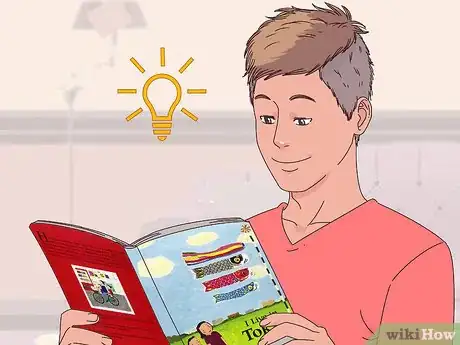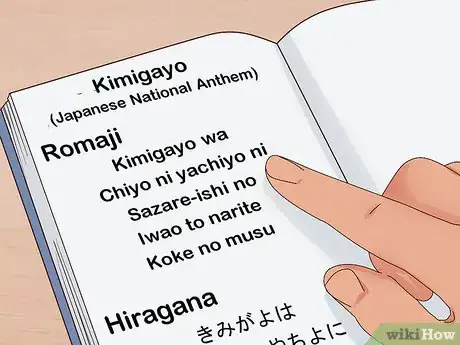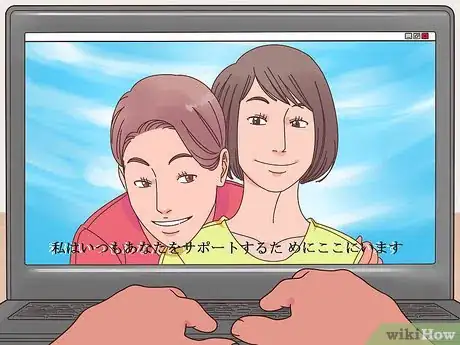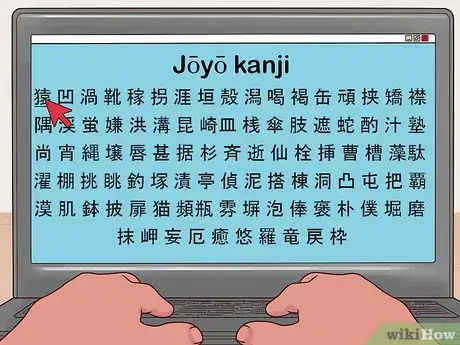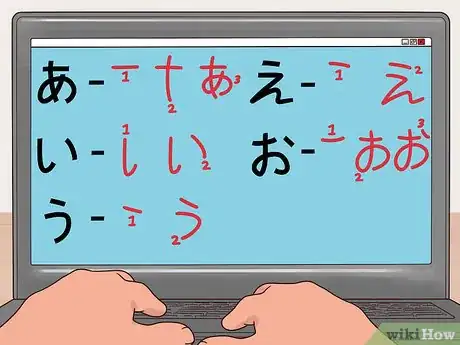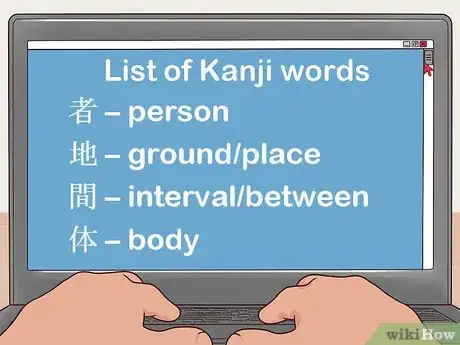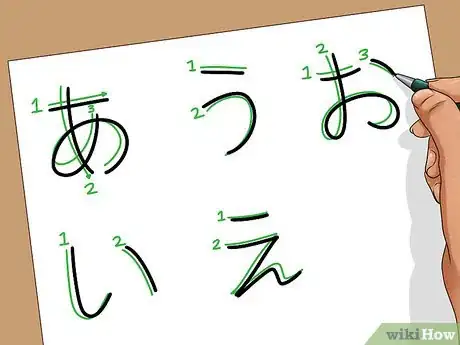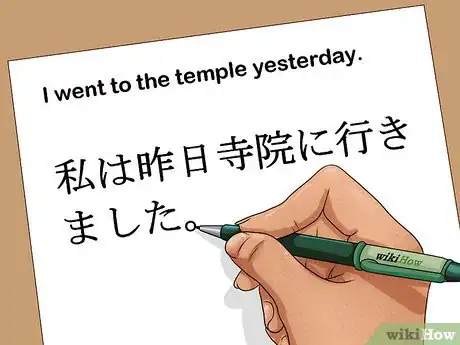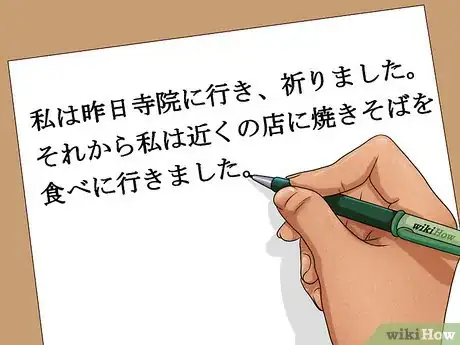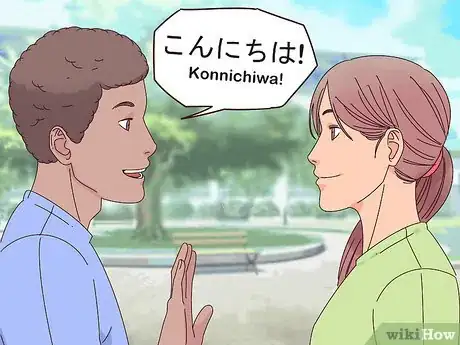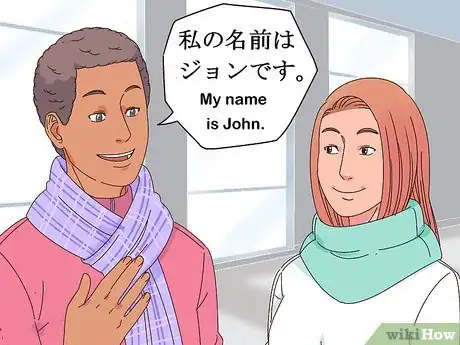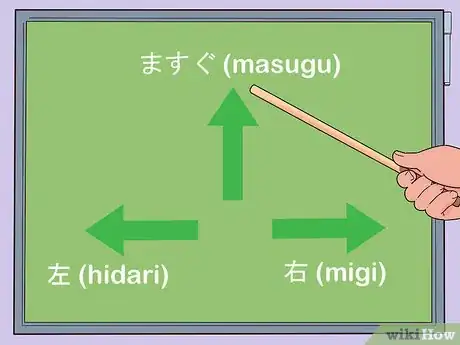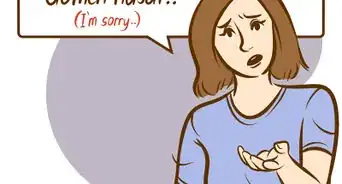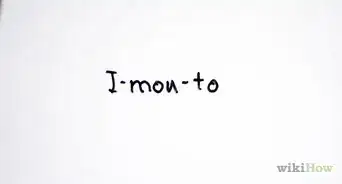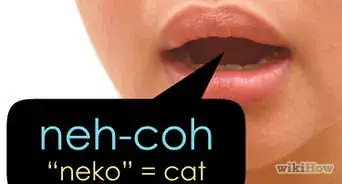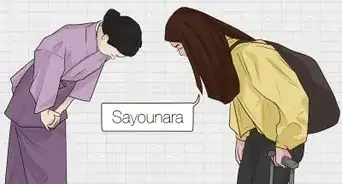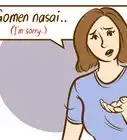This article was co-authored by wikiHow Staff. Our trained team of editors and researchers validate articles for accuracy and comprehensiveness. wikiHow's Content Management Team carefully monitors the work from our editorial staff to ensure that each article is backed by trusted research and meets our high quality standards.
There are 13 references cited in this article, which can be found at the bottom of the page.
wikiHow marks an article as reader-approved once it receives enough positive feedback. This article received 20 testimonials and 82% of readers who voted found it helpful, earning it our reader-approved status.
This article has been viewed 463,858 times.
Learn more...
Japanese characters are so beautiful and complex that it can feel overwhelming when you try to tackle the task of reading and writing Japanese quickly. Just because there are over 50,000 kanji characters doesn't mean you need to learn them all. Most native Japanese speakers only know the two phonetic scripts and around 6000 kanji characters. While it may still take years to quickly read or write Japanese, you can learn basic Japanese relatively quickly if you know how to prioritize your studies.
Steps
Reading Japanese Fast
-
1Start reading Japanese texts written for children. Instead of diving into a complex text that will require a vast command of the kanji, begin with books that will help you to grasp the hiragana and the katakana first.
- You can start with translated versions of books like Disney or The Very Hungry Caterpillar. This way you can easily compare the translation to the original text to help grasp the sentence structure.
- Look for books by Mari Takabayashi while you learn hiragana. Her children's books are written entirely in hiragana, but will challenge your mastery of the script.
- Guri and Gura are also a very famous series of Japanese children's books that you can try as you become more advanced. They can help to build your basic vocabulary.
- Try manga. Once you feel comfortable with children's books, try moving up to some manga as a gateway to more advanced reading.
-
2Focus on basic Japanese grammar and sentence structure. Japanese can seem confusing to read at first because there are no spaces between the characters.[1]
- Japanese sentence structure follows subject-object-verb format, as opposed to the subject-verb-object structure that English uses. Whereas an English sentence might be "I drink water", the Japanese equivalent would translate literally to "I water drink" (私は水を飲みます).
- Japanese distinguishes parts of a sentence with particles - for example, は or が often denotes the subject, を indicates an object, で indicates the location of an event, に indicates direction or time, and so forth. These particles are placed directly after the words they refer to.
Advertisement -
3Tackle one subject at a time. It can be frustrating to get past the first page of a book in Japanese, but stick with it. As you go through a text, many words will be repeated later in the document. The more you read and encounter the same words, the faster your reading will go as they become more familiar.[2]
- Choose subjects you like. If you are interested in music, get books that are at your Japanese reading level for that subject. If the topic interests you, you stand a much better chance of pushing through the reading and picking up more of the language.
-
4Don't spend time learning to speak the language. If your goal is simply to learn to read and write Japanese fast, you will only slow yourself down if you get an audio learning course or take a class where you will practice conversational Japanese. It is possible to learn the language without having to speak it. Since kanji uses characters to represent meanings, it doesn't matter whether you know how to pronounce the words out loud. All that matters that you know what a symbol means and how to correctly use it in a sentence.
- Instead of practicing speaking, spend all your study time building your kanji vocabulary, learning grammar, and practicing writing.
-
5Turn on Japanese subtitles. Try putting on a television show or movies in your native language, and turn on Japanese subtitles. As you begin to build your reading speed and vocabulary, you can mute the volume so you have to read the Japanese subtitles. It might be difficult to keep up at first, but you can use the images on the screen to help you gather the context along with the words.
-
6Build your vocabulary by studying the Jōyō Kanji. Most of the words in Japanese are kanji characters borrowed from Chinese. The Jōyō Kanji are a list of 2136 Chinese characters that the Japanese government promotes as most useful to understanding the language.[3]
- Keep a kanji blog as you learn. It can take many months or even years to learn kanji. Having a blog makes it easy to look back and review the words you have learned.[4]
- Be patient. It will take a good deal of time and repetition to learn Kanji.
Writing Japanese Fast
-
1Memorize the hiragana script. Hiragana is the phonetic script used in the Japanese language. Since it accounts for every sound used in the language, it is possible to write everything in hiragana.
- There are 46 characters in the hiragana script.[5] Each of them represents a vowel (a, e, i, o, u) or a consonant (k,s,t,n,h,m,y,r,w) + vowel.
- Use hiragana script to write participles and expressions, or words that are uncommon and might not be known by your reader.[6]
- Make flashcards of each of the hiragana characters with the phonetic sound they represent on the backside. Practice by going through them once or twice a day by saying the phonetic sound that goes with each character. Then try looking at the phonetic sound and writing the corresponding hiragana character.
-
2Study the katakana script. The katakana script is composed of 46 symbols that create the same phonetic sounds and the hiragana script but are used for words that originated from another language. This can be useful when you want to talk about things like America, Mozart, or Halloween.[7]
- Since there are no long vowel sounds in the Japanese language, all long vowels in katakana are denoted by a long dash "⏤" following the character. For example, "ケーキ" is how you say "cake." The dash indicates the long "a" sound.
- The hiragana and katakana scripts can be learned in just a couple weeks if you practice them for a couple of hours each day.
-
3Study the characters in a handwritten font. Just as the letter 'a' appears different on computer fonts than when it is handwritten, many typed Japanese computer fonts appear different than the handwritten fonts.
- Memorize. A good way of learning is to spend about a half hour to an hour a day memorizing and writing characters.
- Quiz yourself. To test if you're remembering hiragana and katakana, try to write a certain group of sounds from memory. If you can't do it, go over it again. Make a chart of all the Japanese sounds, then try to fill them in with the corresponding hiragana or katakana scripts. Keep trying daily until you can do all 46 for each script.
-
4Use kanji, but only when you need to. Learning kanji can help to shorten your writing significantly, but it is used sparingly, even by native speakers. You often need to be sure that the reader is going to recognize the kanji you use. If you know how to say a word, but do not know the kanji, you can spell it out phonetically using hiragana.[8]
-
5Practice the proper stroke order. Stroke order may not seem important, but it can be necessary to distinguish one character from another, especially with kanji.[9] Additionally, it actually helps you write much faster, whether it's hiragana, katakana or kanji.
- Write characters top to bottom, left to right.
- Make your horizontal strokes before vertical strokes.
- Make shapes in the middle doing strokes on the sides.
- Dots or smaller strokes should come last.
- Learn the proper angles for each stroke.
-
6Practice writing sentences. You don't need to start off with anything complex, but writing in Japanese will improve your writing speed and help you memorize the stroke order of the characters.
- Write in hiragana unless some of the words are imported. You can choose to either write it horizontally (in which case you'd write left to right, as in English) or in the more traditional vertical fashion (in which case you'd write top to bottom, right to left).
- Write nouns, adjectives and verbs using kanji. Most of the words in Japanese are kanji characters that have been borrowed from the Chinese language.[10] Once you start writing kanji, make sure that you're using the proper kanji, since some kanji have the same reading, but different meanings.
-
7Do not write in romaji. While it may seem easier to simply use romanization to capture the syllables, romaji is not used by Japanese people and your writing may just end up confusing the reader. Since there are many homonyms in the Japanese language, romaji is not a very efficient way to write or read.
-
8Write in semi-cursive or cursive to write faster. Once you have mastered the stroke order, you can begin to write characters in semi-cursive or cursive. Practice writing sentences and words while removing the brush or pencil as little as possible from the page. Since you have learned the proper stroke order, you can simply apply less pressure in between the strokes and produce characters seamlessly.
- Just like in other languages, certain characters can be simplified slightly in the writing to write quickly.[11] While you don't want to make your characters illegible, usually the context of the writing will help the reader to understand a sloppily written character.
Using Basic Japanese
-
1Say hello. こんにちは means "hello" in Japanese. You pronounce it Konnichi wa.
- おはようございます means "Good morning." You pronounce it like, Ohayo gozaimasu.
- こんばんは means "Good Evening." Pronounce it like, Konban wa.
- お休みなさい means "Good night." Pronounce it like, Oyasumi nasai.
- さようなら means "Goodbye." Say, Sayonara.
-
2Say thank you very much. ありがとうございます means "Thank you very much" in Japanese. You pronounce it Arigatou gozaimasu.
- If someone thanks you, say you're welcome. どういたしまして means "You're welcome." Pronounce it, Do itashimashite.
-
3Ask how someone is doing. お元気ですか means "How are you?" You pronounce it Ogenki desu ka?[12]
- If someone asks how you are doing, let them know you're fine. 元気です means, "I'm fine." Pronounce it genki desu.
-
4Introduce yourself. 私の名前は means, "My name is..." Pronounce it Watashi no namae wa.[13]
-
5Learn directions. It's important to know how to get where you're going.
- まっすぐ(massugu) means straight.
- 右(migi) means right.
- 左(hidari) means left.
Community Q&A
-
QuestionI am attempting to decipher an artist's name, from the early part of the 20th century, or possibly late 19th century. Is there a way to take a picture and translate?
 Community AnswerThe Google Translate app allows you to take photos of an item, and will translate it to your desired language.
Community AnswerThe Google Translate app allows you to take photos of an item, and will translate it to your desired language. -
QuestionWhat is the easiest way to learn kanji?
 Community AnswerYou need to know general stroke order in order to get a head start on learning kanji. Once you have that down, you can look up online guides, or you can search for ''"kyoiku kanji"'', which is the order of kanji taught to Japanese children and language-learners.
Community AnswerYou need to know general stroke order in order to get a head start on learning kanji. Once you have that down, you can look up online guides, or you can search for ''"kyoiku kanji"'', which is the order of kanji taught to Japanese children and language-learners. -
QuestionIs katakana or hiragana used more in Japan?
 Community AnswerHiragana is used most often, and is often used in combination with kanji. Katakana is used only for imported words, such as names or things that don't really have an official Japanese term (e.g., the word "cake", which is written as ケーキ).
Community AnswerHiragana is used most often, and is often used in combination with kanji. Katakana is used only for imported words, such as names or things that don't really have an official Japanese term (e.g., the word "cake", which is written as ケーキ).
References
- ↑ https://www.guidetojapanese.org/grammar_guide.pdf
- ↑ http://www.tofugu.com/videos/how-to-read-japanese-faster/
- ↑ http://www.sljfaq.org/afaq/jouyou-kanji.html
- ↑ http://www.fluentin3months.com/2k-kanji/
- ↑ http://www.stockkanji.com/images/HowToWrite/HowTo_HiraganaChart.gif
- ↑ https://www.mlcjapanese.co.jp/survival_03.html
- ↑ https://www.nhk.or.jp/lesson/en/letters/katakana.html
- ↑ https://www.tofugu.com/japanese/must-use-kanji/
- ↑ https://www.tofugu.com/japanese/kanji-stroke-order/
About This Article
The quickest way to read Japanese is to begin with children’s books. Focus on the sentence structure and grammar of the language, which may be quite different from your native language. Work on one subject at a time, and don’t spend time learning how to speak Japanese if your goal is to read and write it quickly. The quickest way to write Japanese is to memorize the hiragana script and study the katakana script. Write using a combination of hiragana and katakana characters, and use kanji only when necessary. To learn basic Japanese phrases and words to help start you off, keep reading below!
